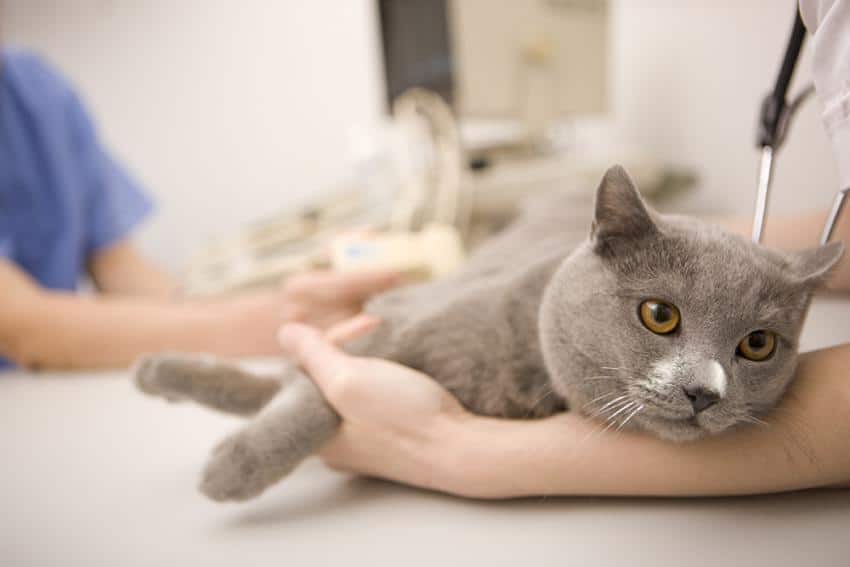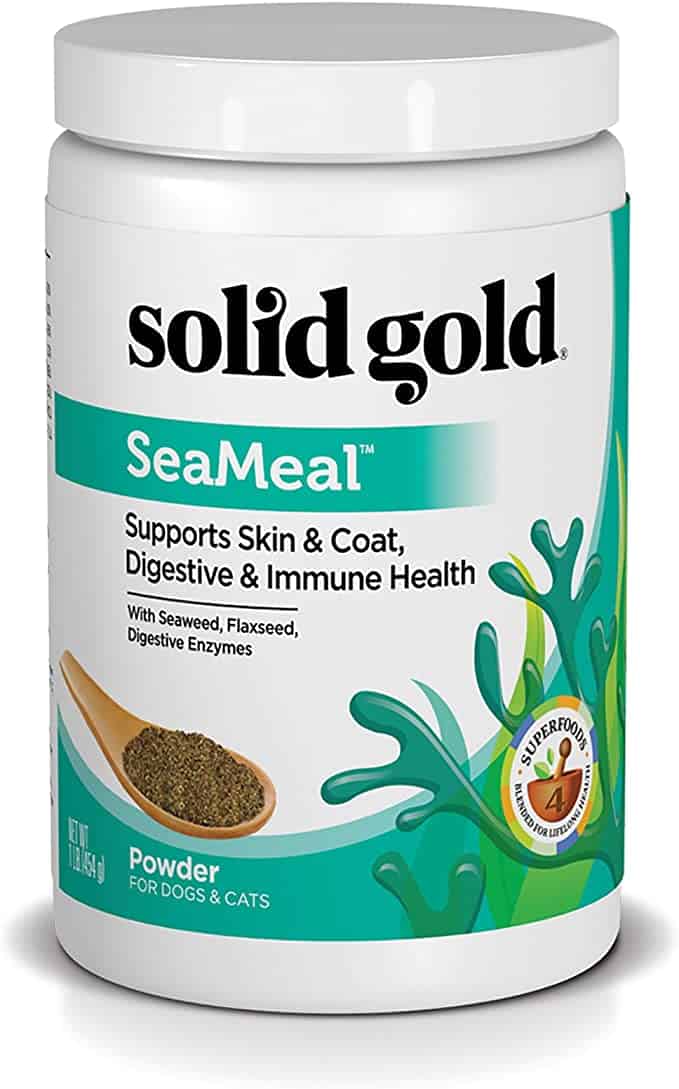
The Feline Leukemia Virus (FeLV) is the number one killer of household cats. It’s a virus that can be passed from cat to cat, which can lead to cats developing certain cancers. As frightening as that may sound, FeLV is preventable through vaccination.
If you are worried about cat leukemia, then this article will tell you everything you need to know about the virus. As 85% of cats who test positive for the virus die within three years, it’s important for cat parents to know how to protect their fur babies and what signs to look for.

Table of Contents
What is Cat Leukemia?
Feline Leukemia is a retrovirus. Retroviruses (such as HIV in humans) invade the body in the opposite way to normal viruses. They are made up of RNA, but once they have invaded a cell they are able to convert it to use their own DNA and multiply that way. There’s a great YouTube video by SciShow explaining the process in more detail.
The problem with retroviruses is that they can remain dormant for a long time, so your pet could be affected without showing any signs or symptoms. However, retroviruses compromise the immune system and can lead to your pet developing anemia or lymphoma, another type of cancer. Having a weak immune system can also leave your pet susceptible to other infections.
How do Cats Catch it?
Feline Leukemia only affects cats. It can’t be passed on to other pets or humans. A cat could become exposed to the virus by interacting with a cat who was already infected. The most usual way the virus is transmitted is in bodily fluids, most often saliva or blood, but also through saliva and feces.
This means that when cats socialize, there is a chance that an infected cat could pass the virus on. A common way for cats to pass the virus on is when fighting, as you can imagine a bite or scratch can give FeLV a chance to pass from cat to cat. The same is also true for grooming, and to a less extent through shared litter boxes or toilet areas.
If there is any chance that your cat has come into contact with another cat, then there is a chance that they could have contracted the virus.

How to Prevent Cat Leukemia
Rates of infection are at their lowest in single-cat households, where the pet is a house cat. The risk of contracting the virus increases with the number of pets that you have, especially if they share food and water bowls, and litter trays. Your pet is much more likely to contract the virus if it goes outside, where it will be exposed to other cats.
The good news is that due to the availability of vaccines, the risk of contracting FeLV is lower than it has been for a long time. Kittens should be vaccinated at around 8 weeks and will need a second immunization a few weeks later. After that, annual vaccinations will ensure your cat is protected.
If you have an older cat, and you are not sure if they have been vaccinated or not, then consult your vet. They will be able to carry out a test for FeLV and if your cat has not been exposed to the virus they can start a vaccination schedule.
If you would prefer to test your cat yourself, there are tests available to carry out at home.
SmileCare DR.Vet Pet Feline Rapid FIV/FeLV
SmileCare DR.Vet Pet Feline Rapid FIV/FeLV Leukemia Testing Kit for Cats | AmazonA blood sample is required for this test, so it is recommended for use by medical professionals. It will give you a result on your cat’s blood sample within 10 minutes for both Cat Leukemia and Cat Immunodeficiency.
Feline Leukemia Saliva Test

No need for a blood sample with this home test, you only need to collect some saliva. Mail it off to the lab and they will be in touch with your result.
The sample is tested within 24 hours of receipt and you will receive a call with the results. Written results are also sent via email/fax with info to see if your paw-tner is shedding the virus and contagious.
Symptoms of Cat Leukemia
Because the virus can lay dormant, it’s possible that an infected cat wouldn’t show any symptoms at all. When cats do start to show symptoms it is not the FeLV itself, but the symptoms of a compromised immune system that start to show. You should be on the lookout for the following signs:
- Pale gums.
- A yellow color appearing in your cat’s eyes, or inside their mouth.
- Swollen lymph nodes – in cats these can be felt below the jaw or near the shoulders.
- Signs of infection, whether that is skin, urinary tract or respiratory. This is a sign of a compromised immune system.
- Weight loss and lack of appetite.
- Your cat’s coat beginning to look poor.
- Tiredness and lack of energy & enthusiasm for life.
- Diarrhea.
- Mouth ulcers.
If your pet hasn’t received their regular vaccinations and begins to show any of these signs then it’s important to have them seen by a vet as soon as possible. Although the prognosis for cats with FeLV isn’t good, it is still possible to support your pet so they can enjoy as long a life as possible.

Living with FeLV
As we said previously, once a pet has been diagnosed with cat leukemia, there is an 85% chance that they won’t live longer than three years. That and the risk of passing the infection to other cats are why, if your pet should test positive, you may be given the option of having your cat put to sleep.
But about 70% of cats who encounter the virus are able to resist it, or combat it themselves so it stays in remission. If you have more than one cat, it isn’t guaranteed that one infected cat will pass the virus on. You could choose to keep your FeLV+ cat living in your home, as this blogger did. If you are going to make that choice then there are a few things that you should keep in mind:
- If you have other cats, you should have them tested for cat leukemia too. If they don’t also have the virus, then you should have them vaccinated.
- If the virus is dormant, then it may not show up positive on a test. So a negative result doesn’t necessarily mean you cat is FeLV free. Discuss this with your vet.
- Consider keeping separate food and water bowls, and litter trays, to lower the risk of spreading the virus between pets.
- If you have a Queen who becomes pregnant, there is a good chance she will pass the virus on to her kittens.
- Kittens are more vulnerable to the virus than older cats.
There are some products specially designed to help cats maintain a healthy immune system and fight infection
NHV Felimm

This herbal support product claims to strengthen your cat’s immune system and help combat infection. Reviews from pet owners are promising.
NHV Felimm is designed to help support cats and dogs suffering from immune conditions and their symptoms. It helps your pet's body stay strong by supporting the lymphatic system and a healthy immune response.
Solid Gold SeaMeal

With added fiber and Omega oils, alongside a range of vitamins and minerals, this supplement promises an all-around health enhancement for your cat.
If you do keep your cat at home then you should talk to your vet about a regular program of health checks to make sure that your pet stays in top health. You will need to stay on top of even minor symptoms which could become something more serious in a cat with a compromised immune system.
It’s formulated with a blend of USA-sourced seaweed rich in vitamins, minerals, amino acids and antioxidants to support a healthy skin and coat and immune health.
Prevention is Better than Cure
FeLV is one of those viruses which are far better avoided than dealt with. If you have an outdoor cat or more than one cat at home, then vaccination is by far the easiest way to ensure that you don’t find one or more of them becoming infected. While you could also choose to keep a house cat and isolate it from other feline company there is really no way to be sure that they won’t come into contact with the virus.
Although the thought of your beloved cat getting a virus such as FeLV is worrying, we hope that this article helps you to understand this virus and make the right choices to keep your pet in top health.





Leave a Reply